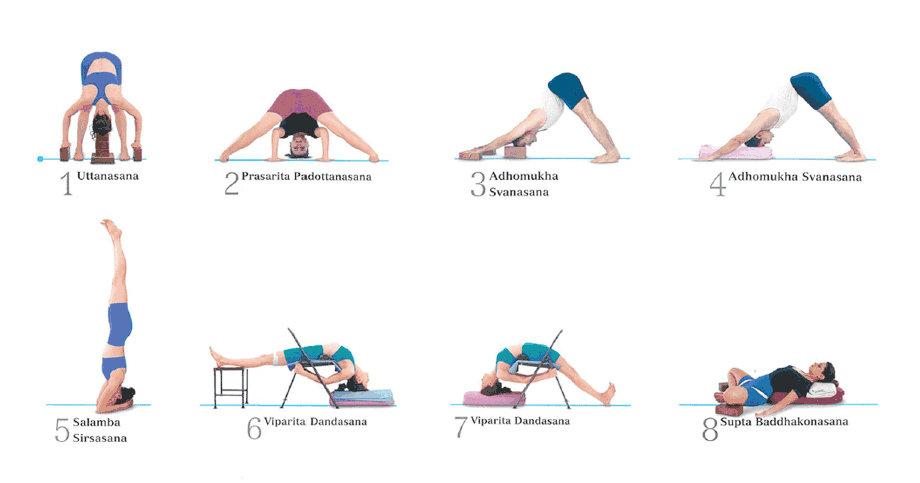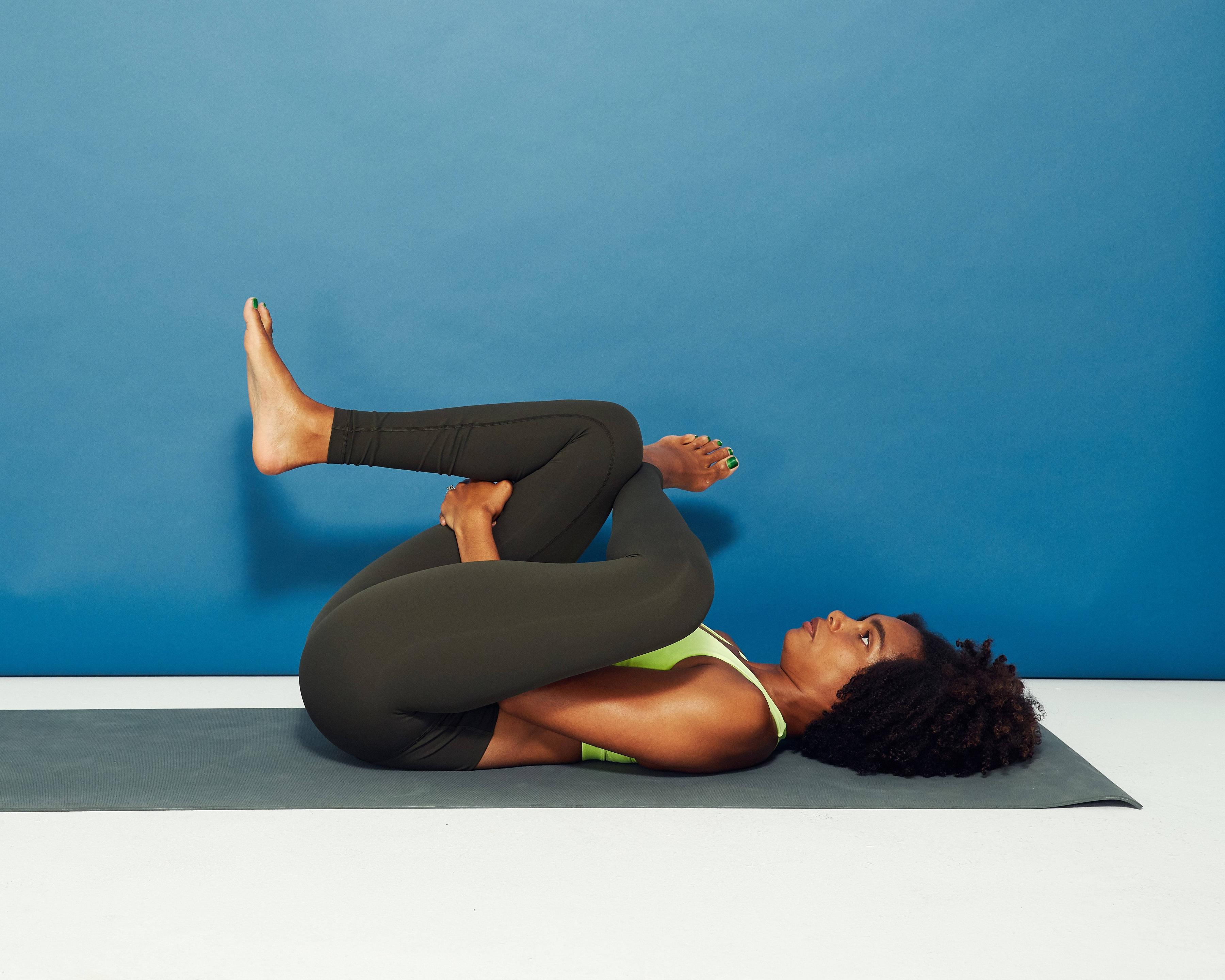
The many articles that are available on yoga will help you learn more and improve your practice. These articles will provide you with information that you can use to get started in yoga. These are some great options: Learn about the health benefits of yoga and how it can improve your overall health. Here are some popular types.
The benefits of yoga are first and foremost. Modern medicine can treat physical ailments but it's not as effective at treating emotional, intellectual, or personality health. Yoga, on the other hand, is holistic and holistic. It promotes inner peace by focusing on daily activities. Yoga can help with depression. Yoga can even be used to treat sleep disorders.
Improved circulation is another benefit of yoga. Higher levels of red blood cells and hemoglobin mean that more oxygen reaches the cells, decreasing the risk of heart attacks and strokes. These conditions can be prevented as blood clots are often the cause. The inverted postures encourage blood flow to the heart. You will be able to do the poses better if you are more fit. Your capacity to handle difficult physical exercises may increase as your body becomes stronger.

In addition to improving your health, yoga can improve your mind. Yoga integrates the mind, body, and spirit. Yoga can help with anxiety and depression by improving mental health. It promotes holistic healing and empowers the student. It can also help with other issues. It can also reduce stress and anxiety. You'll feel less stressed and more energetic.
The most important thing about yoga is its ability to improve your health. There are many kinds of yoga. You can find one online, in your town. Another option is to read articles written and submitted by others. It will give you a good idea of what works for you. Check out the articles written about yoga for more information. The most important thing to do is to continue practicing yoga.
Some people may be interested in Kundalini yoga, which focuses on meditation. This system of yoga is more than 5,000 years old and was introduced to the western world in 1969 by Yogi Bhajan. This powerful spiritual practice can help you become more aware of your body. Start with an introductory class if yoga is new to you. Try one of the many variants for beginners.
Google Scholar makes it easy to find articles about yoga. You can search for articles on yoga using the keywords "yoga" or "therapeutic effects". This will help you find the most relevant research. You can also include other keywords like "yoga" and "therapy" to narrow your results. To find studies that assess the therapeutic effects of yoga on chronic stress or diseases, such as diabetes and hypertension, click here. If yoga is something you are interested, you can concentrate on a specific topic.

There are many different types of yoga. Hatha yoga, a more physical version of yoga, is one example. This form of yoga focuses more on stretching, bending, and strengthening muscles. This type of yoga is about awareness and mindfulness, not about how you look. Actually, it's a form of exercise. Yoga helps you to be more flexible, and less stressed. It's not about your physical appearance. It is also about mental and spiritual well-being.
Yoga can help improve bone strength. As we age, our bones become less strong and more fragile. Osteoporosis is a bone disease caused by insufficient calcium intake. In addition, aging often means less sleep. This may not be the best way to improve your sleep habits, but it might be a good option if you want to practice yoga. So, try to try it! It's worthwhile!
FAQ
How to Build Muscles Fast
To build muscle quickly, eat healthy foods and exercise regularly.
Early morning is the best time to exercise. You are awake and alert, ready to take on the day.
You should try exercises such as squats, bench presses, push-ups, etc.
Consider trying different weight training programs and drinking plenty of water throughout each day.
Is it true to say that protein overeating can lead to kidney stones?
Protein helps maintain healthy bone and tissue. Over-consuming protein can result in calcium being excreted through the kidneys. This can lead to kidney stone formation.
It is important to keep in mind that not everyone will develop kidney stones if they consume more protein than 2 grams per kilogram (2.2lbs). You don't have to eat a lot of protein to get kidney stones.
By watching how much sodium you consume, kidney stones can be prevented. The kidneys regulate the amount of sodium they consume. Too much sodium can cause kidney stones.
You may also want to reduce your protein intake in the event of kidney stones. Protein accounts for about half the daily caloric requirement of most adults. A reduction in protein intake will likely result in weight loss.
If you do decide to eat more protein, don't go overboard. Aim for less than 20% of total calories from protein.
What's a good workout plan for 7 days?
Three days per week should be spent on cardiovascular training, including running, biking, swimming, and two strength exercises using free weights, weight machine, as well as one flexibility/core exercise such as yoga, Pilates. It's essential to do each activity at least once a week. The total time for each session should not exceed 45 minutes.
Cardiovascular Exercises: Running, biking, swimming
You should aim to get at least 60 mins of cardio exercise per week. You can aim for 75 minutes a week for best results. Cardio exercises can be used to increase blood flow, stimulate muscle growth, and improve blood circulation.
Strength Training
Cardio exercises target your heart and lungs. Strengthening your muscles and bones is the opposite. Strength training builds lean muscle mass, which helps burn calories even when resting.
Flexibility and Core Workouts
To strengthen your whole body, flexibility and core work outs are excellent ways to do so. Yoga and Pilates are both excellent choices.
Is there any benefit to doing yoga?
Yoga has been around for thousands of years and is now very popular. Yoga is very popular with celebrities as well as ordinary people who wish to be fit and healthy.
Yoga is great because it stretches your muscles while strengthening them. It calms you down and relaxes you.
Yoga and other forms exercise differ in that yoga is focused on breathing techniques.
Different poses can be practiced to increase flexibility and balance.
What is your favorite workout order?
It all depends on what you're looking for. To build muscle mass, you should first lift heavy weights. Then, move on to cardio. Then if you want to lose weight, go from cardio to strength training.
Cardio can be done if you want to just lose fat. Add strength training to your workouts.
If you are looking for muscle mass, cardio should be your last option. Cardio stimulates growth hormones and helps build muscle mass.
Also, eat before you workout. This will fuel you muscles better, which will make it work harder. This will make you feel better while working out.
Statistics
- An estimated calorie range for moderately active adult males falls between 2,200 to 2,800 calories per day, depending on age. (eatright.org)
- Candidates and applicants must pass all four tests at 70% (minimum level) to graduate from Basic Deputy U.S. Marshal (BDUSM) Training. (usmarshals.gov)
- 10 pounds in a month is likely during a lean bulking phase, especially for beginners. (muscleandstrength.com)
- According to the American Heart Association, blood pressure should be checked at least once every two years, beginning at age 20. (my.clevelandclinic.org)
- The PRS enabled risk stratification for overall prostate cancer and lethal disease with a four-fold difference between men in the highest and lowest quartiles (HR, 4.32; 95% confidence interval [CI], 3.16-5.89). (pubmed.ncbi.nlm.nih.gov)
External Links
How To
How can I burn fat while exercising?
Exercise can help you burn calories and increase your metabolism.
At moderate intensity, you will lose weight easily.
These tips will help you burn fat and keep fit while exercising.
-
Cardio exercises include walking, running, swimming, cycling, running and jogging.
-
You can exercise for 30 mins three times per week.
-
Add strength training to your workouts if you are looking to lose more weight.
-
Avoid intense workouts. You can build muscle and not break down muscle tissue.
-
Drink plenty of water during exercise. Water helps flush out toxins and keep your body properly hydrated.
-
After working out, drink low-fat protein shakes. Protein shakes help repair muscles and boosts energy.
-
Take smaller meals throughout each day to avoid feeling hungry.
-
Don't skip breakfast! Skipping breakfast can cause you to feel tired and sluggish.
-
Mental health is important. Stressful situations can affect your metabolism.
-
Keep a positive attitude. Studies show that overweight people are more likely to be obese than those who perceive themselves as attractive.
-
Sleep enough. It is harder to lose fat if you don't get enough sleep.
-
Keep active. Keep moving every hour.
-
Maintain a healthy diet. Healthy eating will keep you fuller and more satisfied for longer.
-
Find ways to relax. An anxious mind won't allow your body release stress hormones, which can lead to the destruction of muscle tissue.
A balanced diet will provide all nutrients that are necessary for growth.
Consider eating six small meals daily instead of three big ones. This gives your body time and energy to process the food.
For strong bones, we need 500 mgs of calcium daily. Calcium can be found as a dairy product such as milk, yogurt and fortified soy drinks, orange juices, cereals, breads, and cereals.
Calcium can be found in leafy green veggies, beans, tofu and nuts as well as seeds, nuts and cheese.
Vitamin D is required by the body to absorb calcium. Vitamin D is found in eggs yolk, fatty fish and fortified foods.
Vitamin E is vital for your skin's health. Vitamin E can be found in vegetable oils as well as wheat germ oil, peanuts and almonds.
Your body requires zinc to function normally and for wound healing. Zinc can be found in seafood, legumes and meats.
Zinc deficiencies can lead to fatigue, decreased appetite, depression, and reduced immunity.
Sugar intake can lead to insulin resistance which causes blood glucose levels to rise. Insulin resistance leads directly to weight gain.
When there is a high level of free radicals, insulin resistance can develop. Free radicals are molecules containing unpaired electrons which cause damage to cells membranes.
The main sources of free radicals are food additives.
Free radical damage may lead to cancer, heart disease diabetes, arthritis, asthma and other conditions.
To prevent free radical damage, eat a healthy diet rich in antioxidants. Antioxidants protect against oxidative damage.
Vitamin C is found in citrus fruits and beta carotene is found in carrots.
Selenium, copper as well as manganese and zinc are some other antioxidant nutrients.
Selenium helps protect cells from oxidative damage caused by free radicals. Selenium is also found in Brazil nuts.
Copper protects your eyes, brain, eyes and red blood cell. Copper is found in shellfishes, poultry, meat, organ meats, and other foods.
Manganese forms an essential part of bone structure. Manganese can be found in brown rice and spinach as well as bananas, prunes raisins, oatmeal, lentils, and oatmeal.
Zinc is necessary for average growth, reproduction, and wound healing. Zn can be found in lean cuts, white fish, poultry, eggs, and other foods.